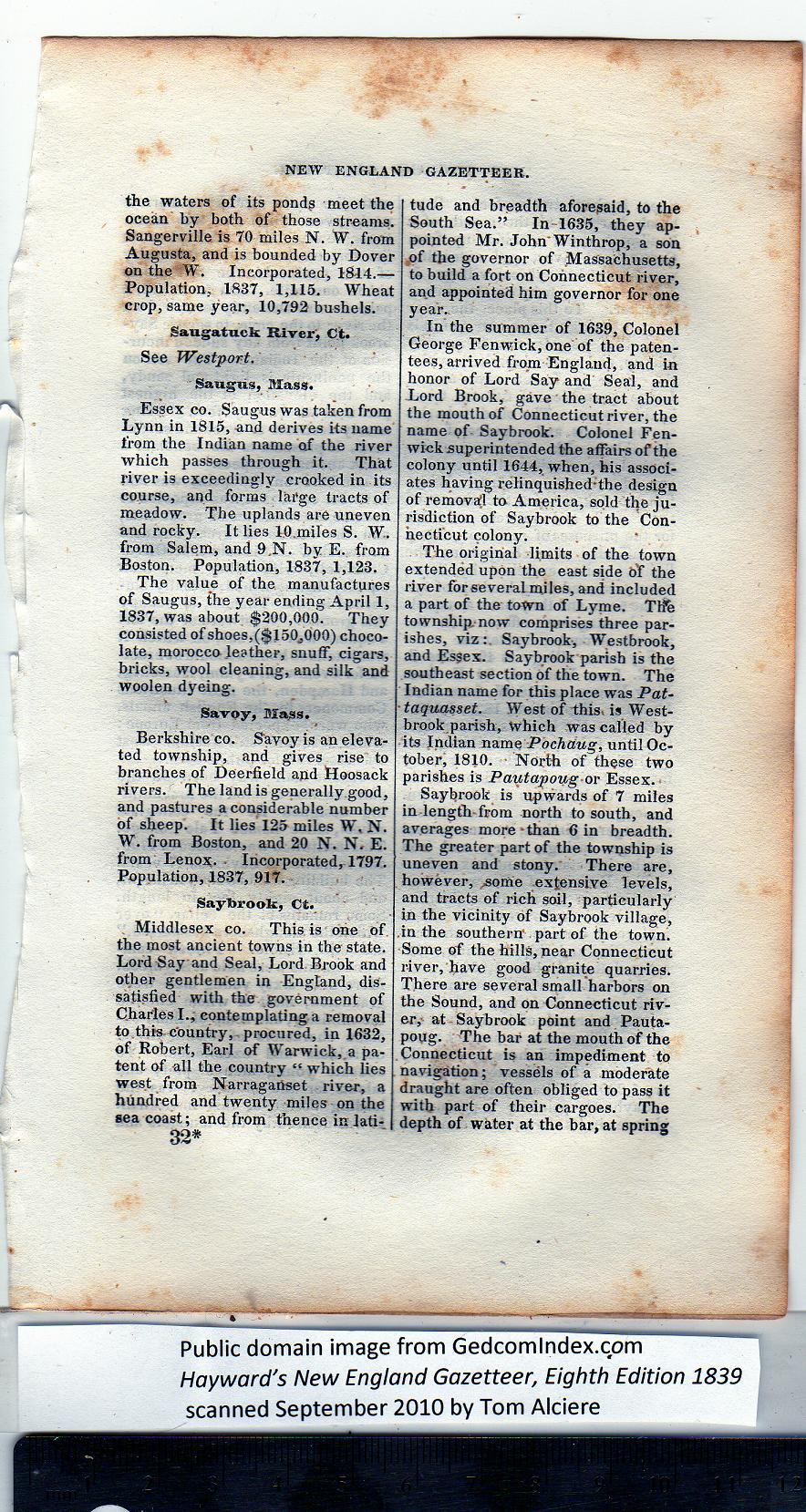|
the waters of its pond^ meet the
ocean hy both of those streams.
Sangerville is 70 miles N. W. from
Augusta, and is bounded by Dover
on the W. Incorporated, 1814.—
Population, 1837, 1,115. Wheat
crop, same year, 10,792 bushels.
Saugatuck River, Ct.
See Westport.
Saugus, Hass.
Essex co. Saugus was taken from
Lynn in 1815, and derives Us name
from the Indian name of the river
which passes through it. That
river is exceedingly crooked in its
course, and forms large tracts of
meadow. The uplands are uneven
and rocky. It lies 10.miles S. W..
from Salem, and 9.N. by E. from
Boston. Population, 1837, 1,123.
The value of the manufactures
of Saugus, the year ending April 1,
1837, was about $>200,000. They
consisted of shoes, (^lfiOjOOO) choco-
late, morocco leather, snuff, cigars,
bricks, wool cleaning, and silk and
woolen dyeing.
Savoy, Mass.
Berkshire co. Savoy is an eleva-
ted township, and gives rise to
branches of Deerfield and Hoosack
rivers. The land is generally good,
and pastures a considerable number
of sheep. It lies 125 miles W, N.
W. from Boston, and 20 N. N. E.
from Lenox. - Incorporated, 1797.
Population, 1837, 917.
SayTbrooIc, Ct.
Middlesex co. This is one of
the most ancient towns in the state.
Lord Say and Seal, Lord Brook and
other gentlemen in England, dis-
satisfied with the government of
Charles I., contemplating a removal
to this country, procured, in 1632,
of Robert, Earl of Warwick, a pa-
tent of all the country “ which lies
west from Narraganset river, a
hundred and twenty miles on the
sea coast; and from thence in Jati-
32* |
tude and breadth aforesaid, to the
South Sea.” In-1635, they ap-
pointed Mr. John Winthrop, a son
of the governor of Massachusetts,
to build a fort on Connecticut river,
and appointed him governor for one
year.
In the summer of 1639, Colonel
George Fenwick, one of the paten-
tees, arrived from England, and in
honor of Lord Say and Seal, and
Lord Brook, gave the tract about
the mouth of Connecticut river, the
name of Saybrook. Colonel Fen-
wick superintended the affairs of the
colony until 1644, when, his associ-
ates having relinquished-the design
of removad to America, sold the ju-
risdiction of Saybrook to the Con-
necticut colony.
The original limits of the town
extended upon the east side of the
river for several miles, and included
a part of the town of Lyme. Ttfe
township, now comprises three par-
ishes, viz: Saybrook, Westbrook,
and Essex. Saybrook parish is the
southeast section of the town. The
Indian name for this place was Pat-
taquasset. West of this, is West-
brook paiish, Which was called by
its Indian name Pochaug, until Oc-
tober, 1810. • North of these two
parishes is Pautapoug or Essex.
Saybrook is upwards of 7 miles
in length from north to south, and
averages more than 6 in breadth.
The greater part of the township is
uneven and stony. There are,
however, some extensive levels,
and tracts of rich soil, particularly
in the vicinity of Saybrook village,
in the southern part of the town.
Some of the hills, near Connecticut
river, have good granite quarries.
There are several small harbors on
the Sound, and on Connecticut riv-
er, at Saybrook point and Pauta-
poug. The bar at the mouth of the
Connecticut is an impediment to
navigation; vessels of a moderate
draught are often obliged to pass it
with part of their cargoes. The
depth of water at the bar, at spring |
